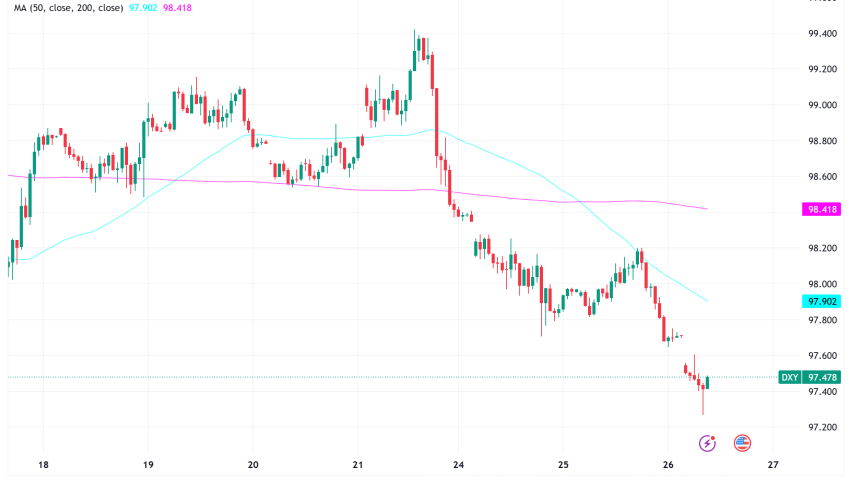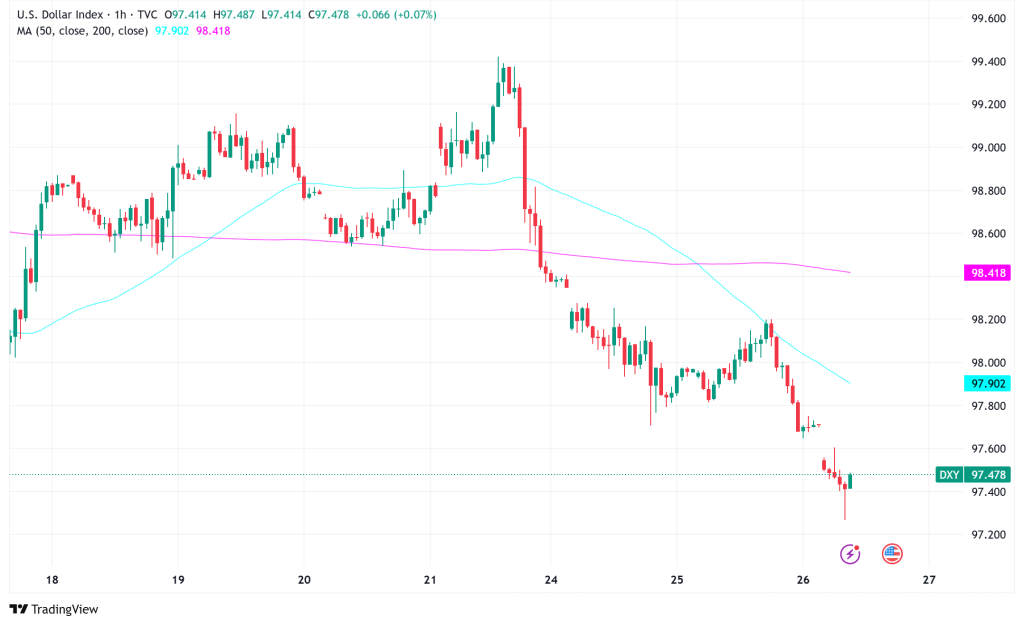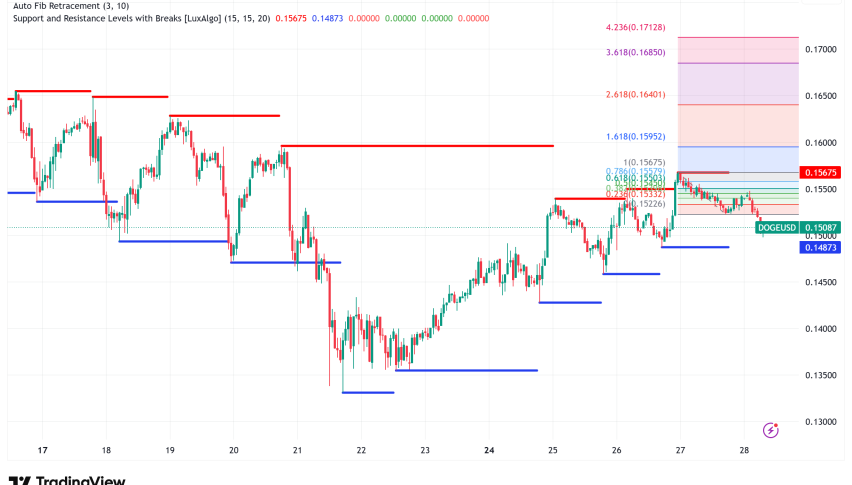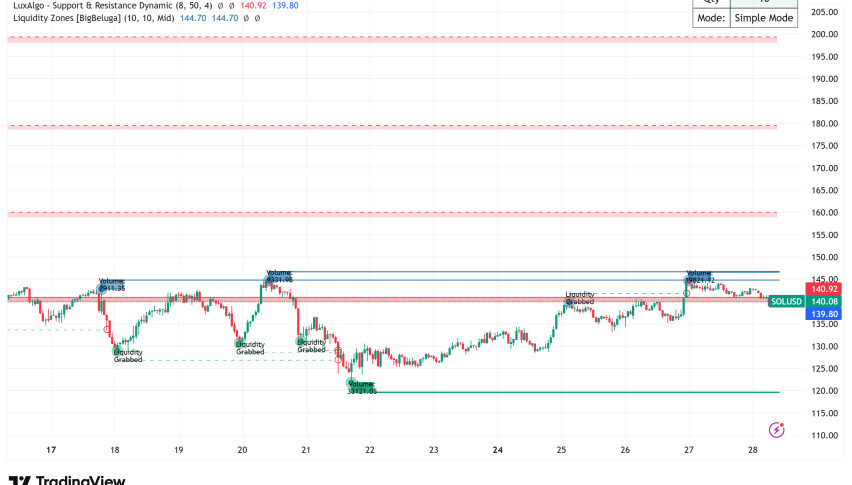US Dollar Index Plunges to Three-Year Low Amid Fed Independence Concerns
The US Dollar Index (DXY) fell to its lowest level since February 2022, hitting about 97.47 during Thursday's trading session. This is a big

Quick overview
- The US Dollar Index (DXY) has dropped to its lowest level since February 2022, reflecting a 10.1% decline this year.
- Concerns over Federal Reserve independence and political pressure on Fed Chair Jerome Powell are contributing to the dollar's decline.
- Market expectations for a rate cut have surged, with a 25% chance now seen for the July meeting, up from 12% a week prior.
- Geopolitical shifts and the rise of cryptocurrencies are reducing the dollar's appeal as a safe-haven asset.
The US Dollar Index (DXY) fell to its lowest level since February 2022, hitting about 97.47 during Thursday’s trading session. This is a big drop of 10.1% since the beginning of the year. The significant drop in prices shows that people are more worried about the Federal Reserve’s independence and the changing global economy, which has made the dollar less appealing as a safe haven.

Political Pressure on Fed Chair Weighs on Dollar
The dollar fell faster after news that President Donald Trump is thinking about naming a new Federal Reserve Chair to replace Jerome Powell as soon as September or October. The Wall Street Journal says that possible candidates are Kevin Warsh, a former Fed governor; Kevin Hassett, the head of the National Economic Council; and Scott Bessent, the Treasury Secretary.
Kieran Williams, head of Asia FX at InTouch Capital Markets, said, “The move would raise questions about the potential erosion of Fed independence and potentially weaken credibility.” “If this were the case, it could change how people think about interest rates and make them rethink their dollar positions.”
On Wednesday, Trump criticized Powell again, saying he was “terrible” for not wanting to slash interest rates more aggressively. Powell warned senators about the inflationary dangers of the president’s tariff policy, which adds to the public pressure. He stressed the need for careful thought about future rate decreases.
Rate Cut Expectations Surge
The unpredictability in politics has changed what the market thinks about Federal Reserve policy in a big way. The CME FedWatch tool says that financial markets now think there is a 25% chance of a rate cut at the July meeting, up from just 12% a week ago. Fed funds futures show that rates will drop by 60 basis points by the end of the year. This is a big jump from 46 basis points just a few days ago. The first decrease is predicted to happen in September.
Dovish comments from Fed officials Michelle Bowman and Christopher Waller have made people even more sure that the Fed will loosen its monetary policy. Karl Schamotta from Corpay said that traders “are choosing to see Powell’s comments as a sign that rates will go down in early autumn.”
Geopolitical Shifts Reduce Safe-Haven Demand
During current international tensions, the dollar has not acted as a safe-haven asset as it usually does. President Trump praised the quick resolution of issues between Israel and Iran, which has led to less risk-averse trading that usually helps the dollar.
Lyn Alden, a macroeconomist, said, “The dollar index is playing with new cycle lows today.” “Not much of a flight-to-safety bid in the last few weeks either.”
This change has happened at the same time as Bitcoin’s rise, with the cryptocurrency going back above $107,000 after dropping below $100,000 for a short time over the weekend. As traditional fiat currencies come under attack, analysts say that crypto is becoming a new way to store value.
DXY’s Technical Outlook Remains Bearish
The DXY is still trading below its 50-day moving average at 99.400, which is a technical level. Key support at 97.621 is in danger. Technical analysts say that a clear break below this level could lead to more losses toward 95.137.
The index’s performance so far this year is very different from how it has done in the past during times of geopolitical stress. This shows that the way currencies work around the world has changed.
Looking Ahead: Economic Data and Future Catalysts
Traders are waiting for Thursday to get the final US GDP growth figures for the first quarter, as well as orders for durable goods, the Chicago PMI, pending home sales, and weekly jobless claims. The dollar could get a short-term boost from results that are better than expected, but the overall downturn seems to be holding.
JPMorgan thinks the DXY will drop another 5.7% over the next year because US economic growth is slowing down and other developed markets are using fiscal measures that are good for the economy. The bank thinks that US growth would slow down more than growth in other developed economies, which will put even more pressure on the currency.
As the July 9 deadline for US tariff talks gets closer, analysts say that any extension might ease market panic but keep the dollar’s value low. In the short term, the dollar seems likely to stay under pressure because of political uncertainty, dovish Fed predictions, and changing global conditions.
- Check out our free forex signals
- Follow the top economic events on FX Leaders economic calendar
- Trade better, discover more Forex Trading Strategies
- Open a FREE Trading Account


